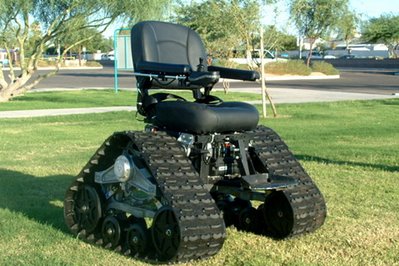ATLANTA - Tracking traffic can be an expensive business. In some places, costly cameras and radar systems are mounted high above highways to watch traffic at strategic points. Transportation agencies also dig up roads to install sensors that monitor the flow. And helicopters roam the skies of the busiest cities, relaying information on the choked roadways to media outlets.
ADVERTISEMENT
Atlanta's horrendous traffic has inspired two companies that are looking to monitor many more roads and highways than is done today and at a much lower cost. Their approach: Track the signals of cell phones that happen to be inside cars.
By using anonymous data from wireless providers to mark how fast cell-phone handsets are moving — and overlaying that information with location data and maps — IntelliOne and AirSage hope to offer more detailed information and pragmatic advice than other firms that monitor traffic through radar, helicopters or cameras. But some critics aren't so sure the benefits outweigh the potential privacy risks.
Both systems rely on wireless companies allowing them to process the data from their towers that calculate the position of each phone about twice a second when it's being used and once every 30 seconds when it's not.
IntelliOne, in business since 1999, uses technology that can track vehicles to within 330 feet without using Global Positioning System satellites. Its software is designed to weed out the difference between pedestrians and drivers, then crunch it into detailed color-coded maps that show average speeds along roadways. Light-traffic stretches are in green, slowdowns in yellow and logjams in red.
It rolled out a pilot program in Tampa, and plans to dive into its first market in March, in Ontario, Canada. Forty more markets, including Atlanta, could be covered by November 2007.
The service would be marketed free to wireless providers, who would share profits with IntelliOne. Media outlets could buy access to broad snapshots of a city's traffic situation.
Individual customers would be able to buy a single use or pay a monthly fee for personalized information and a service that sends alternate routes when traffic takes a turn for the worse. No prices have been set yet.
AirSage has a similar strategy and has partnered with Sprint Nextel Corp. to offer government customers real-time traffic data. The company already has four contracts with state transit departments and recently announced a plan with the Georgia Department of Transportation to extend traffic coverage between Atlanta and Macon.
Cy Smith, AirSage's president and CEO, said more than $1 billion is spent each year by government agencies to track traffic, but the expense doesn't even cover 1 percent of the nation's roads. He said his company can increase coverage tenfold at the same expense.
The success of both systems will hinge on whether wireless companies are willing to extend the service to a mass market. Lewis Ward, a telecom analyst with IDC, said wireless carriers have long been reluctant to use the locations of their users for profit and that's unlikely to change.
"Location is one of the unique attributes of a cell phone," Ward said. "There is a lot of value there and a lot of potential for abuse. From my sense, the carriers have invested quite a lot of money to develop these systems and they're very unlikely to let those streams back out."
It remains to be seen whether wireless providers will be swayed. Cingular, for instance, said it doesn't plan to immediately provide traffic-tracking services.
"We're not going to speculate on future plans," said Dawn Benton, a company spokeswoman. "But should we participate in projects like this in the future, we would only do so with strong privacy protections in place."
Kristin Wallace, a Sprint spokeswoman, confirmed the partnership with AirSage but said she wouldn't comment more due to "competitive reasons."
Privacy advocates are already raising a red flag.
"This is your personal information. Shouldn't you have the right to control whether people know where you are?" asked Melissa Ngo of the Washington-based Electronic Privacy Information Center. "When I signed up for a cell phone, I did not sign up to be tracked."
Beyond privacy concerns, the cell phone-based tracking system has other potential flaws, one being that there's no way to determine exactly what is backing up traffic.
Ron Herman, IntelliOne's CEO, illustrated that as he sat in his Atlanta office monitoring an abrupt slowdown in Tampa traffic. It could have been a police car parked on the shoulder of the road or a more disruptive fender-bender, but there's no way to know. "I'd guess someone lost a mattress," he reckoned.
And tracking data will likely be sparse late at night or early in the morning, when few drivers are navigating the roads.
But the odds are, where cell phones are sparse, so is traffic.
As Smith said, "There are times when the absence of data tells as much a story as the presence of data."

 Via Engadget:
Via Engadget:

























